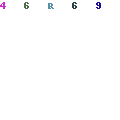University Museum spans campus
There is art all over the SIUE campus thanks in small part to a French minister of culture. While this idea may seem odd to most people, it has been a focus of the University Museum, and its current director, Eric Barnett, for many years.

Eric Barnett, director of the University Museum (right), examines some of the new collection donated by the SMART Museum in Chicago.
There are many artifacts that may be found in various places across the SIUE campus, from large sculptures in front of the Vadalabene Center to small lithographs in numerous faculty offices. Barnett stated that this concept came from the 1950’s from the French Minister of Culture Andre Malraux.
“This all grows out of a concept that was put forth by the French minister of culture–around the 1950’s, his name was Andre Malraux,” said Barnett. “He spoke about museums without walls–not walls in terms of where we hang the artwork but walls in terms of barriers. It was his idea that barriers between people and art should be removed. It should be a natural part of the environment.
Barnett said the idea that art should be part of the daily lives of students was furthered as the planning for SIUE took place in the 1960’s during a meeting called the Environmental Planning Edwardsville Campus.
“There was a big international meeting held in an inflatable structure in East St. Louis in 1960. At that time, they had architects, designers, planners, educators involved in free flowing discussions of what a modern university campus should be like. The idea that art should be a part of everybody’s daily experience came out of that,” said Barnett. “That is what we have been working at all this time.”
While many artifacts can be seen in Lovejoy Library and The Morris University Center, the majority of the art around campus is in faculty offices. Barnett states that allowing faculty to showcase museum artifacts greatly increases the exposure of the variety of the collection.
“We include faculty offices because it gives us an opportunity just to get more art out. If we just limited ourselves to the public space on campus, we wouldn’t be able to use nearly as much of our collection,” said Barnett. “There’s a Picasso lithograph in [the chancellor’s] office that has a personal dedication written on it by the woman who donated it to the University. And then there is a suite of Picasso prints up there that are in the outer office of the chancellors office. There are works by students.”
Barnett stated that many of the objects in offices are color lithographs and drawings. A few offices have three-dimensional objects such as Native American and Greek pottery. Much of the work to prepare the objects for display is done by Jerry Fahey, the University Museum exhibits designer. Anyone who is interested in expanding the exhibited collection of campus can contact Fahey. Fahey works with those who are interested to make necessary arrangements.

Eric Barnett, right, discussing the possibilities for integrating architectural artifacts of the University Museum with SIUE administration.
Barnett stated that his long term goal is to eventually incorporate some of the artifacts that the University Museum has collected over the years into a building. He said that it is appropriate that some of the architectural artifacts that the museum has collected over the years should be reintegrated into a new building.
“Someday, we could integrate it right into the structure, along with much of the architectural ornament. And so we could recreate it’s original intended use. And a staircase is used to be walked on,” said Barnett.
Filed Under: General CAS Stories












